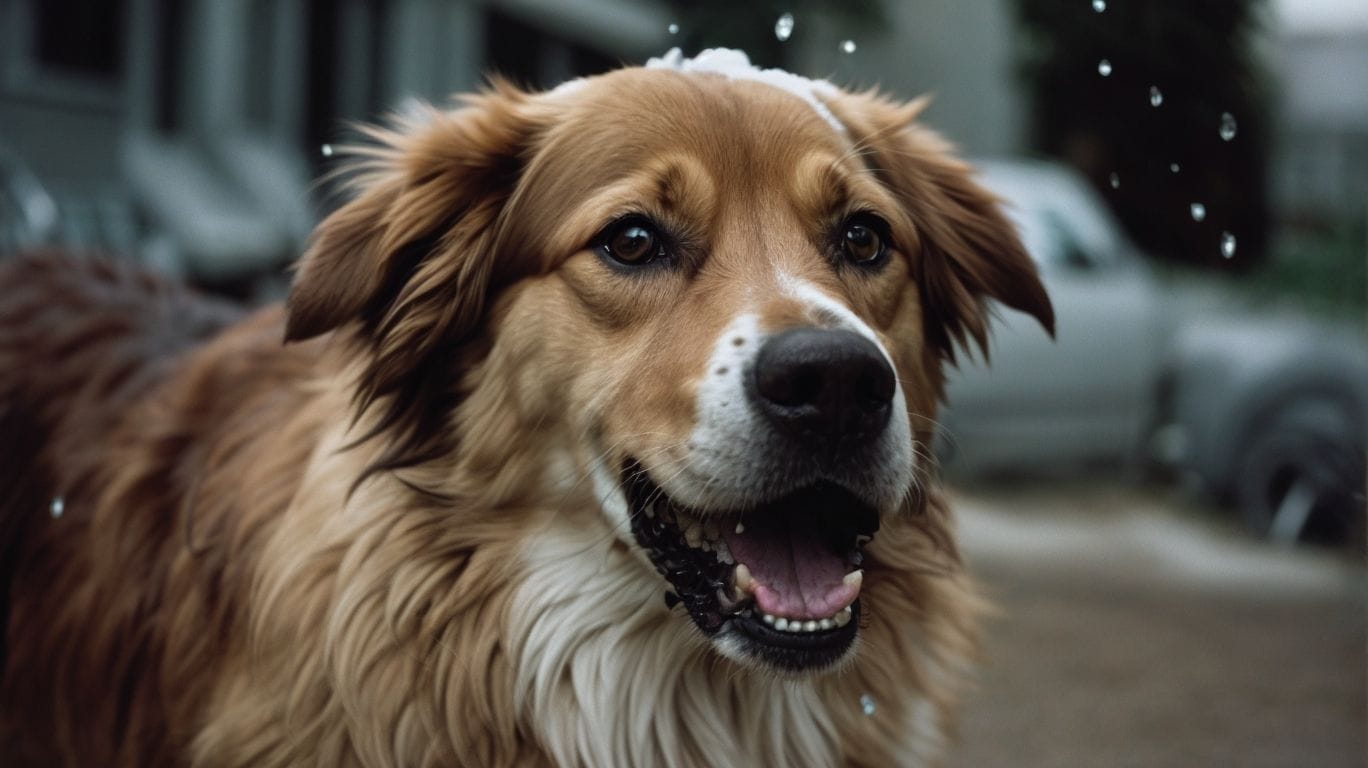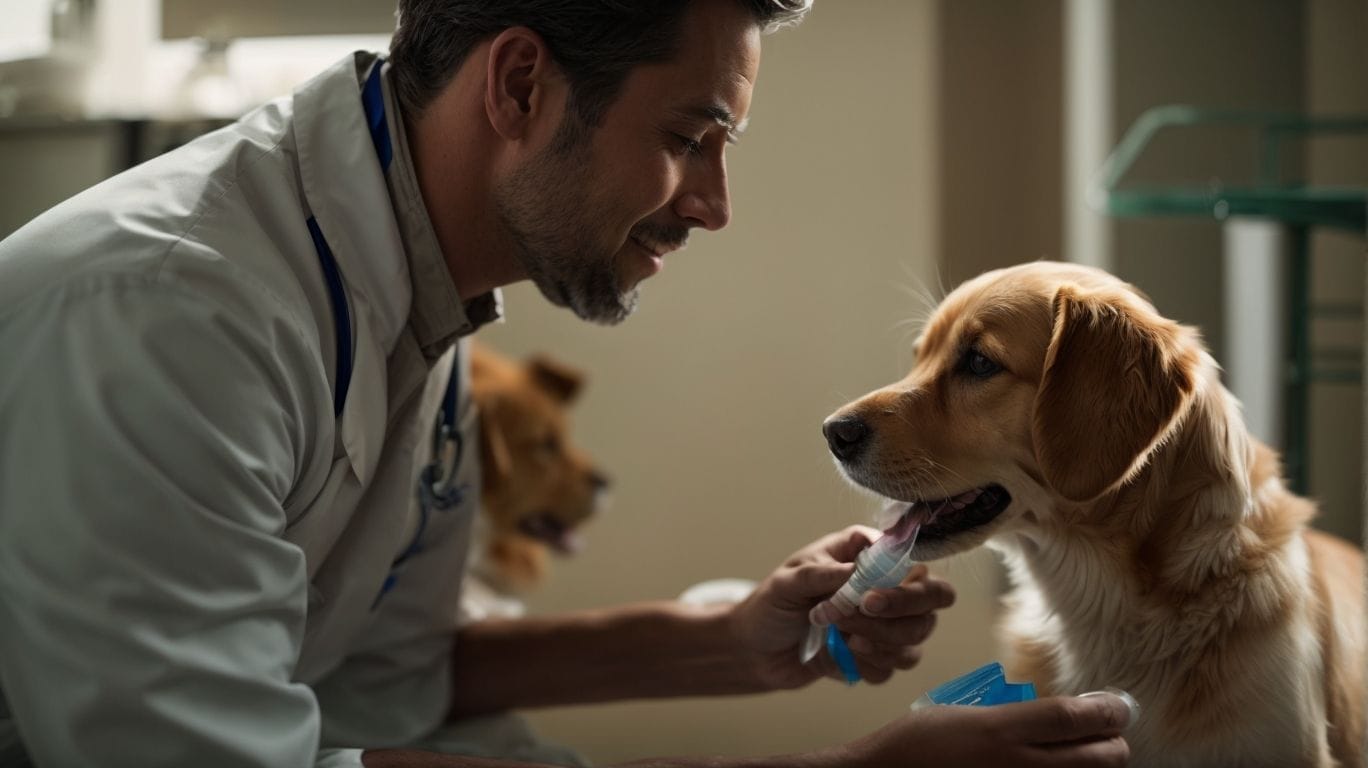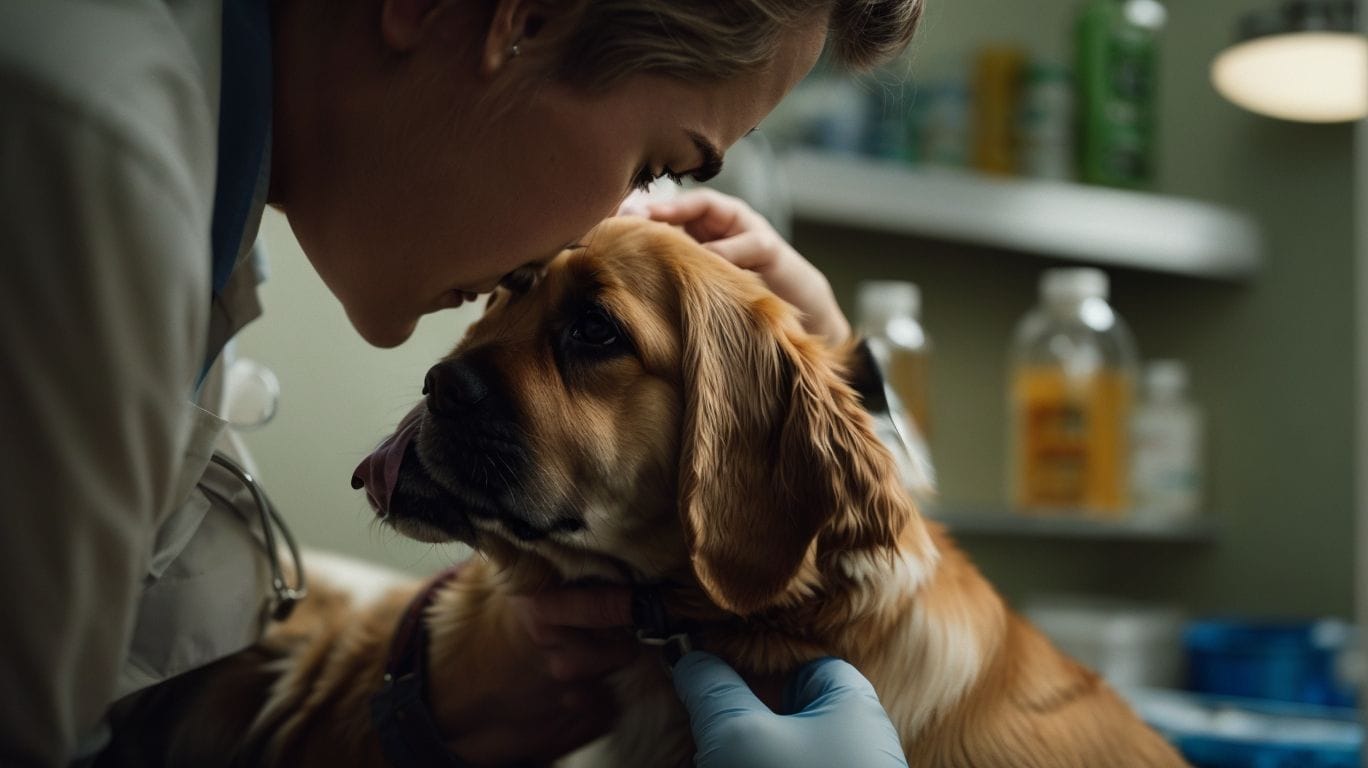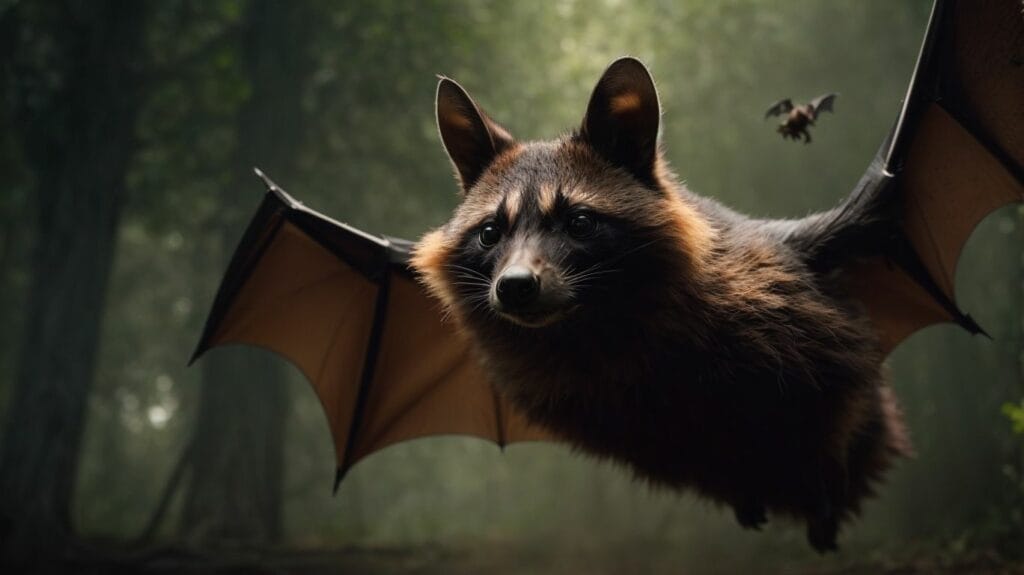Rabies is a deadly viral disease that affects the nervous system of mammals. It is primarily transmitted through the bite of an infected animal, causing inflammation of the brain and eventually leading to death. Understanding how animals get rabies is crucial for prevention and control. Here are the main points to consider:
Rabies is a viral disease that affects the central nervous system of mammals, including humans. The Rabies virus causes it and is most commonly transmitted through the saliva of an infected animal.
Rabies can be transmitted to animals and humans in several ways:
– The most common mode of transmission is through a bite from an infected animal. The virus enters the body through broken skin or mucous membranes, allowing it to reach the central nervous system.
– Direct contact with the saliva or neural tissue of an infected animal, such as through a scratch or a lick on an open wound or mucous membrane, can also transmit the virus.
– In some cases, the inhalation of bat droppings containing the virus can lead to rabies infection. This mode of transmission is rare but can occur in certain circumstances.
Various animals can contract and transmit rabies:
– Domestic animals like dogs, cats, and livestock can become infected with rabies if they come into contact with an infected animal.
– Wild animals, including raccoons, skunks, foxes, and coyotes, are common carriers of rabies. Interacting with these animals carries a higher risk of exposure.
– Bats are natural reservoirs for the rabies virus and are considered a primary source of transmission to other animals. Even a small bite or scratch from a bat can lead to infection.
The symptoms of rabies in animals can vary but often include behavioral changes, excessive salivation, aggression, disorientation, paralysis, and eventually death. It is important to be aware of these signs in order to prevent further transmission.
Preventing rabies in animals involves several measures:
– Vaccination is the most effective way to prevent rabies in animals. Ensuring that your pets are up to date on their rabies vaccinations is crucial for their protection.
– Limiting your pet’s interaction with wildlife, such as keeping them on a leash and not allowing them to roam freely, can reduce the risk of exposure to rabies.
– Keeping your pets indoors or under close supervision when outside can prevent them from encountering potentially infected animals.
If you suspect an animal has rabies, it is important to take immediate action:
– Contact your local animal control authorities or public health department to report the incident and seek guidance on what steps to take.
– Avoid direct contact with the suspected animal, especially if it is behaving abnormally or displaying signs of aggression.
– If it is safe to do so, observe and record the animal’s behavior, including any unusual symptoms or actions. This information can be valuable for diagnosis and treatment decisions.
– If an animal tests positive for rabies, it will be important to take appropriate measures to ensure public safety, such as implementing quarantine protocols and notifying individuals who may have been exposed.
By understanding how animals get rabies and taking necessary precautions, we can contribute to the prevention and control of this dangerous disease.
Key takeaways:
- Animals get rabies through bites from infected animals: Rabies is primarily transmitted through the bite of a rabid animal, transferring the virus through saliva.
- Direct contact with saliva or neural tissue can also transmit rabies: Any contact with infected saliva or neural tissue, such as through scratches or licks on open wounds, can transmit the virus.
- Inhalation of bat droppings can lead to rabies transmission: The inhalation of bat droppings, particularly in enclosed spaces, can result in the transmission of the rabies virus.
What is Rabies?

Photo Credits: Petnarnia.Com by Terry Scott
What is Rabies?
Rabies is a viral disease that affects the nervous system of mammals, including humans. It is caused by a virus known as the rabies virus, which is transmitted through the bite of an infected animal. Once inside the body, the rabies virus travels through the nerves to the brain, causing inflammation and ultimately leading to death. It is crucial to seek medical attention if you believe you have been exposed to rabies. Vaccination and preventive measures are important in preventing the spread of this highly fatal disease.
How is Rabies Transmitted?

Photo Credits: Petnarnia.Com by Patrick Carter
Rabies, a deadly viral disease, spreads through various means. In this section, we’ll explore the transmission of rabies and uncover the different routes of infection. From bites by infected animals to contact with their saliva or neural tissue and even the inhalation of bat droppings, we’ll delve into the diverse ways in which this disease can be contracted. Prepare to uncover the facts behind how rabies is transmitted and the risks associated with each route. Let’s dive in!
Bite from an Infected Animal
- When bitten by an infected animal, it is crucial to take immediate action to minimize the risk of contracting rabies.
- Follow these steps to address a bite from an infected animal:
- Wash the wound thoroughly with soap and water for at least five minutes.
- Apply an antiseptic solution to prevent infection.
- Seek prompt medical attention to assess the need for vaccination.
- Report the incident to local animal control or health authorities for possible quarantine and testing of the animal.
- Observe the animal for any signs of rabies, such as abnormal behavior or foaming at the mouth.
- Remember, early intervention is vital after a bite from an infected animal to prevent the onset and spread of rabies.
Contact with Saliva or Neural Tissue
Contact with saliva or neural tissue is one of the ways rabies can be transmitted. This can occur through bites from infected animals or direct contact with their saliva or neural tissue. Inhalation of bat droppings can also result in infection. It is crucial to identify the symptoms of rabies in animals, including aggression, excessive drooling, and paralysis, and to implement preventative measures. Vaccination plays a vital role in preventing rabies, as does avoiding contact with wildlife and keeping pets indoors or supervised. If you suspect an animal may have rabies, report it to local animal control, refrain from direct contact, and carefully observe and document its behavior. In the event that an animal tests positive for rabies, appropriate actions will be taken to ensure public safety.
Inhalation of Bat Droppings
Inhalation of bat droppings is one way that rabies can be transmitted to humans and animals. Bat guano, or droppings, can contain the rabies virus if bats in the area are infected. When the droppings are disturbed, the virus can become airborne and be inhaled by humans or animals. It is crucial to exercise caution when handling or cleaning up bat droppings, particularly in enclosed spaces. Wearing protective gear, such as gloves and masks, can help minimize the risk of infection. Seek immediate medical attention if exposed to bat droppings to prevent the onset of rabies.
Fun Fact: Bats, crucial for pollination, also play a significant role in maintaining ecosystems.
Which Animals Can Get Rabies?

Photo Credits: Petnarnia.Com by Mark Baker
Animals and rabies are an intriguing combination. Let’s dig into the world of which animals can get rabies. From our reliable sources, we’ll explore the sub-sections that cover domestic animals, wild animals, and even those fascinating creatures – bats. Get ready for a wild ride as we uncover the facts, figures, and events that shed light on the susceptibility of different animals to this notorious disease. Brace yourself for some eye-opening insights!
Domestic Animals
| Domestic animals are susceptible to rabies and can transmit the disease to humans if they are infected. It is important to take precautions to protect domestic animals from rabies and prevent its spread. Here is some information on domestic animals and rabies: | |
| Types | Examples |
| Common domestic animals | Dogs, cats, cattle, sheep, goats, horses, and pigs |
| Transmission | Through the bite or scratch of an infected animal or contact with the saliva or neural tissue of an infected animal. |
| Symptoms | Behavioral changes, excessive drooling, difficulty swallowing, paralysis, aggression |
| Prevention | Vaccination, avoiding exposure to wildlife, keeping pets indoors or supervised |
Wild Animals
Wild animals, including raccoons, skunks, foxes, and bats, have a significant role in the transmission and spread of rabies. It is crucial to be aware of the potential risks associated with these animals and take necessary precautions to prevent encounters with infected individuals. Here are a few important considerations:
- Types of wild animals such as raccoons, skunks, foxes, and bats are commonly known carriers and transmitters of rabies.
- Rabies can be transmitted through various routes, including bites from infected animals, contact with their saliva or neural tissues, or inhalation of bat droppings.
- To prevent the spread of rabies, it is essential to take preventive measures such as avoiding exposure to wildlife, keeping pets indoors or supervised, and ensuring they are up to date with rabies vaccinations.
- If you suspect an animal may have rabies, it is important to report it to local animal control, avoid direct contact, and carefully observe and record its behavior.
- In the case of a positive rabies test in an animal, appropriate actions will be taken, including quarantine or euthanasia, to prevent further transmission and ensure public safety.
Bats
Bats are unique mammals that play important ecological roles but can also carry and transmit rabies. Here is a table summarizing key information about bats and their role in the transmission of rabies:
| Key Information | Details |
|---|---|
| Bats and Rabies | Bats are the primary carriers of rabies among mammals. |
| Rabies Transmission | Bite from an infected bat, contact with bat saliva or neural tissue, and inhalation of bat droppings can transmit rabies to humans. |
| Wild vs. Domestic Bats | Both wild and domestic bats can carry and transmit rabies. |
| Behavior of Infected Bats | Infected bats may exhibit unusual behaviors such as aggression or disorientation. |
| Prevention Measures | Vaccination of domestic animals, avoiding exposure to bats, and keeping pets indoors or supervised can help prevent rabies transmission. |
| Suspected Rabid Bat Encounter | If you suspect a bat has rabies, report it to local animal control, avoid direct contact, and observe and record its behavior. |
| Rabies in Bats and Public Health Response | If a bat tests positive for rabies, public health authorities may implement measures to prevent further transmission and offer guidance on potential human exposure. |
What are the Symptoms of Rabies in Animals?

Photo Credits: Petnarnia.Com by Gabriel Garcia
What are the Symptoms of Rabies in Animals?
Rabies is a deadly viral disease that affects animals, including humans. It is important to know the symptoms of rabies in animals for early intervention. Some common indications of rabies in animals include aggression, excessive salivation, erratic behavior, and paralysis. In addition, animals with rabies may show signs such as disorientation, difficulty swallowing, and nocturnal animals being active during the day. If you suspect an animal has rabies, it is crucial to avoid contact and immediately seek veterinary assistance. Remember, prevention is key – vaccinating your pets against rabies can protect them and help prevent the spread of the disease. Stay informed and report any unusual behavior in animals to local authorities as a pro tip.
How Can You Prevent Rabies in Animals?

Photo Credits: Petnarnia.Com by Austin Green
Preventing rabies in animals is crucial for their well-being and the safety of humans. In this section, we will uncover effective strategies to protect animals from this deadly disease. From vaccinations to avoiding exposure to wildlife and keeping pets indoors or supervised, we’ll explore practical methods to keep our furry friends safe and healthy. With these measures, we can create a safer environment for both animals and humans, reducing the spread of rabies.
Vaccination
Vaccination is a crucial preventive measure against rabies. It is recommended for both domestic and wild animals to minimize the risk of transmission to humans. By administering a rabies vaccine, animals can develop immunity to the virus. This helps to break the chain of transmission and protect both pets and people. Vaccination programs are especially important in areas where rabies is prevalent. Regular booster shots are usually required to maintain immunity. Ensuring that pets are up to date with their vaccinations is an effective way to prevent the spread of rabies and safeguard public health.
Avoiding Exposure to Wildlife
Preventing the transmission of rabies is crucial, and one way to achieve this is by avoiding exposure to wildlife. Here are some important steps to follow:
- Stay away from unfamiliar or wild animals, especially those exhibiting unusual behavior.
- Avoid areas where wild animals are known to gather, such as caves or abandoned buildings.
- Secure garbage cans and dispose of food properly to discourage wildlife from approaching your property.
- It is important not to feed or try to touch wild animals, regardless of how cute or friendly they may seem.
It is a fact that raccoons, bats, skunks, and foxes are commonly associated with rabies. However, it is vital to note that any mammal, including domestic pets, can become infected with the virus.
Keeping Pets Indoors or Supervised
Keeping pets indoors or under close supervision is crucial for their safety and for preventing the spread of rabies. Here are some reasons why:
- Preventing exposure to wildlife: Rabies is commonly transmitted through encounters with infected wild animals, such as raccoons, bats, and foxes. By keeping pets indoors or supervised, you significantly reduce the risk of them coming into contact with these animals.
- Reducing the risk of bites: When pets are outdoors unsupervised, they may come across other animals that could potentially bite them and transmit rabies. Keeping them indoors or under close supervision minimizes the chance of such incidents.
- Ensuring proper vaccination: By keeping pets indoors, you can ensure that they receive timely vaccinations against rabies. This is essential for their protection and for preventing the spread of the disease to other animals or humans.
- Promoting responsible pet ownership: Keeping pets indoors or supervised is a responsible and caring approach to pet ownership. It not only protects them from rabies but also from other potential dangers and hazards.
What to Do if You Suspect an Animal has rabies?

Photo Credits: Petnarnia.Com by Steven Lopez
If you ever encounter an animal that you suspect might have rabies, it’s crucial to know how to respond swiftly and effectively. In this section, we’ll explore key actions you can take if you find yourself in such a situation. From reporting to local animal control to avoiding direct contact, we’ll cover essential steps to ensure your safety and the well-being of others. We’ll discuss the significance of observing and accurately recording the animal’s behavior. So, let’s dive in and equip ourselves with the knowledge to handle this potentially dangerous scenario.
Report to Local Animal Control
Reporting to local animal control is essential when suspecting an animal has rabies. Local animal control agencies have a critical role in preventing the spread of the disease and ensuring public safety. If you witness any unusual behavior or have suspicions about an animal being infected, it is important to contact your local animal control immediately. They possess the necessary expertise and resources to handle potentially rabid animals safely. Reporting promptly can effectively prevent potential exposure to the virus and ensure the implementation of appropriate measures to protect both humans and animals alike. Always remember, reporting to local animal control is a responsible and necessary action to safeguard your community from the dangers posed by rabies.
Avoid Direct Contact
To prevent the transmission of rabies, it is essential to avoid direct contact with potentially infected animals. Here are some ways to stay safe:
- Please stay away from unfamiliar or wild animals to avoid touching or approaching them
- Do not attempt to handle or feed stray or feral animals
- Maintain a safe distance and observe animals from a distance
- Teach children to never touch or play with animals without adult supervision
- If you encounter an injured or rabid-looking animal, contact local animal control to report the situation
A family in a suburban neighborhood came across a raccoon displaying unusual behavior in their backyard. Instead of getting close to the animal, they promptly called animal control, who verified that the raccoon was indeed infected with rabies. By avoiding direct contact, the family prevented the potential spread of the disease and protected themselves from harm.
Observe and Record Behavior
- When suspecting an animal has rabies, it is crucial to observe and record its behavior for further assessment.
- Here are the steps to follow:
- Keep a safe distance from the animal to avoid potential exposure.
- Observe and record the animal’s behavior, noting any unusual actions such as aggression, unsteady movement, or disorientation.
- Record the date, time, and location of the observation.
- Note any other relevant details, such as symptoms displayed or interactions with humans or other animals.
- Contact local animal control or health authorities to report the suspected case.
Observing and recording the behavior of the animal can provide valuable information for professionals to determine if further action, such as testing for rabies, is necessary.
What Happens if an Animal Tests Positive for Rabies?

Photo Credits: Petnarnia.Com by Brandon Flores
If an animal tests positive for rabies, what happens? It is usually euthanized to prevent the spread of the virus. This is because rabies is a deadly disease that can be transmitted to humans and other animals through bites or scratches. Public health officials will investigate to identify anyone who may have been exposed to the infected animal. They will then recommend post-exposure prophylaxis, which involves receiving a series of vaccines to prevent the onset of rabies. It is crucial to take immediate action if an animal tests positive for rabies to protect public health.
True story: A few years ago, what happened when a stray cat in a small town tested positive for rabies? Local authorities quickly alerted the community and organized a mass vaccination campaign for both domestic pets and feral animals in the area. Fortunately, due to their swift response, no human or animal cases of rabies were reported in connection with the infected cat. It serves as a reminder of the importance of early detection and proactive measures in preventing the spread of rabies.
Some Facts About How Do Animals Get Rabies:
- ✅ rabies is a virus that infects the central nervous system in mammals and is fatal if left untreated.
(Source: Our Team)
- ✅ The virus is transmitted through contact with infected animal saliva, usually through bites.
(Source: Our Team)
- ✅ rabies is a serious public health concern, with annual costs exceeding $300 million for detection, prevention, and control.
(Source: Our Team)
- ✅ About 90% of reported rabies cases in the United States are in wildlife.
(Source: Our Team)
- ✅ Signs of a rabid animal include aggressive behavior, lethargy, walking in circles, confusion, and drunk-like behavior.
(Source: Our Team)


